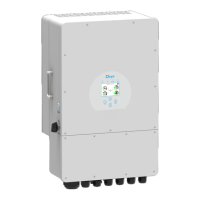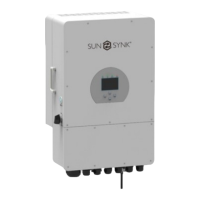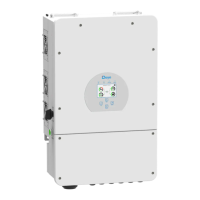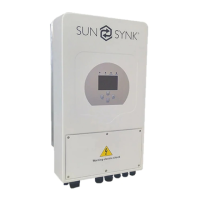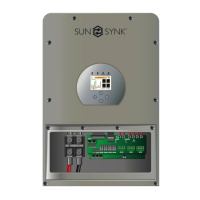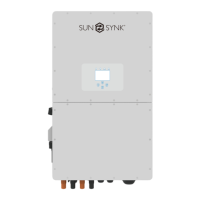Website: www.sunsynk.com E-mail: sales@globaltech-china.com
23
Therefore, if a communication error shows up on display:
1) Check if your data cable is the correct type.
2) Check if you are plugging the cable into the correct sockets.
Usually, RS 485 is employed, but some battery manufacturers use others.
In some types of lithium batteries, the BMS cannot be controlled by Sunsynk inverter. In this case, treat
the battery as a lead-acid type and set the charging and discharging protocol as per the battery manufacturer
specification.
IMPORTANT:
When not using communications between battery and inverter, never overcharge your battery bank
(current and voltage). Many lithium batteries are limited to 100A. Some can be both higher and lower.
Therefore, ensure that voltage and current specifications provided by the battery manufacturer are followed.
If you are using lead-acid batteries, then a good rule of thumb is C x 0.1, which means that the maximum
charge or discharge you can apply to the battery is 10% of the Ah rating of the overall battery array. For
example, a 200Ah battery array composed of 4 x 200 power batteries in series has a maximum charge and
discharge of 20A. Then, you can check Table 1 to select the cable size and fuse rating remembering to follow
the recommendations of the battery manufacturers to ensure that the cable is thick enough to support the
current and that a proper fuse is used.
3.3. AC GRID CONNECTION
The inverter connection to the mains depends a lot on the installation type. However, the mains should
always be connected to the grid connection via any suitable protection device.
IMPORTANT:
If using the inverter without batteries, only use the grid connection. Do not connect anything to the
'AUX/GEN' connection because this will cause problems.
If you connect the inverter to a system with no grid available, all essential and nonessential loads will be
connected via the 'LOAD' output. Therefore, the inverter will operate in ‘Island Mode.’ In this situation, you
Sunsynk.com Sunsynk.com Sunsynk.com Sunsynk.com
Sunsynk.com Sunsynk.com Sunsynk.com Sunsynk.com
Sunsynk.com Sunsynk.com Sunsynk.com Sunsynk.com
Sunsynk.com Sunsynk.com Sunsynk.com Sunsynk.com
Sunsynk.com Sunsynk.com Sunsynk.com
Sunsynk.com Sunsynk.com Sunsynk.com
Sunsynk.com Sunsynk.com
Sunsynk.com Sunsynk.com
Sunsynk.com
Sunsynk.com
Sunsynk.com Sunsynk.com Sunsynk.com Sunsynk.com
Sunsynk.com Sunsynk.com Sunsynk.com
Sunsynk.com Sunsynk.com Sunsynk.com
Sunsynk.com Sunsynk.com
Sunsynk.com Sunsynk.com
Sunsynk.com
Sunsynk.com
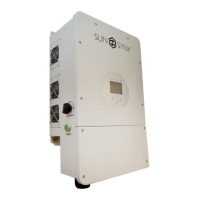
